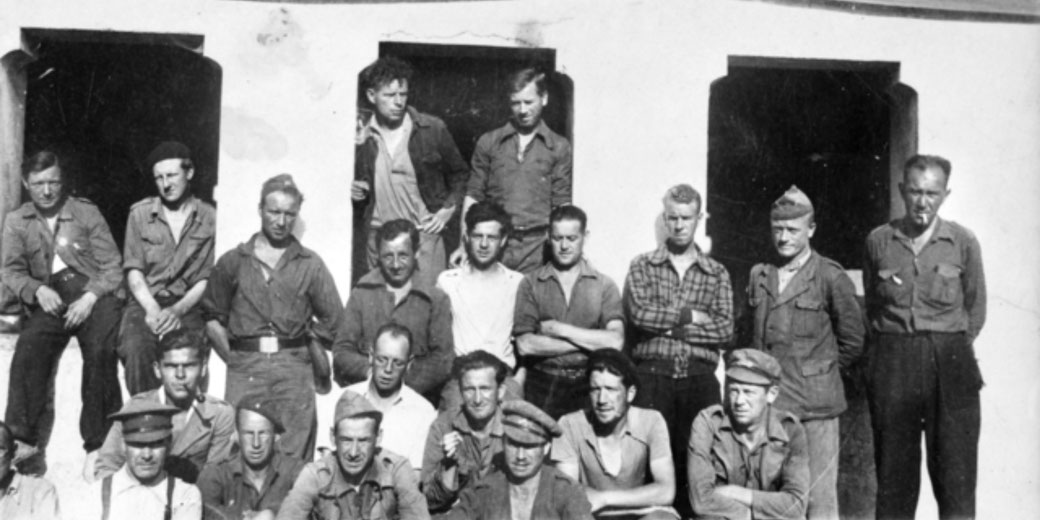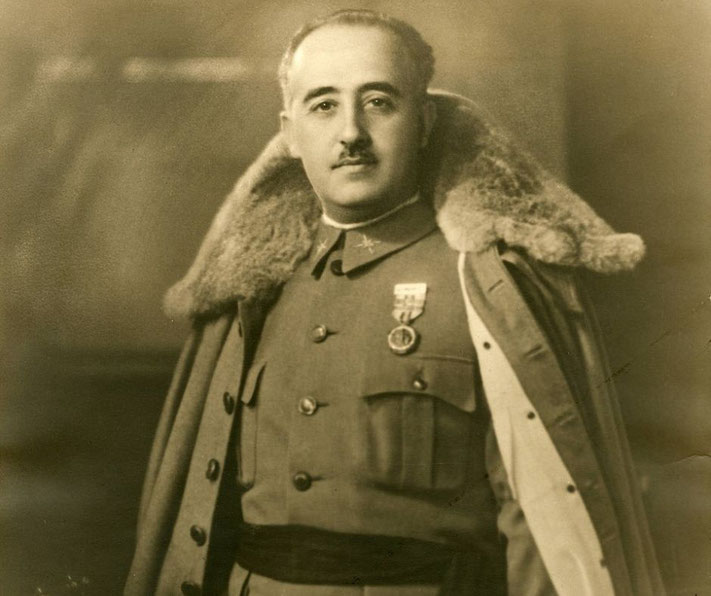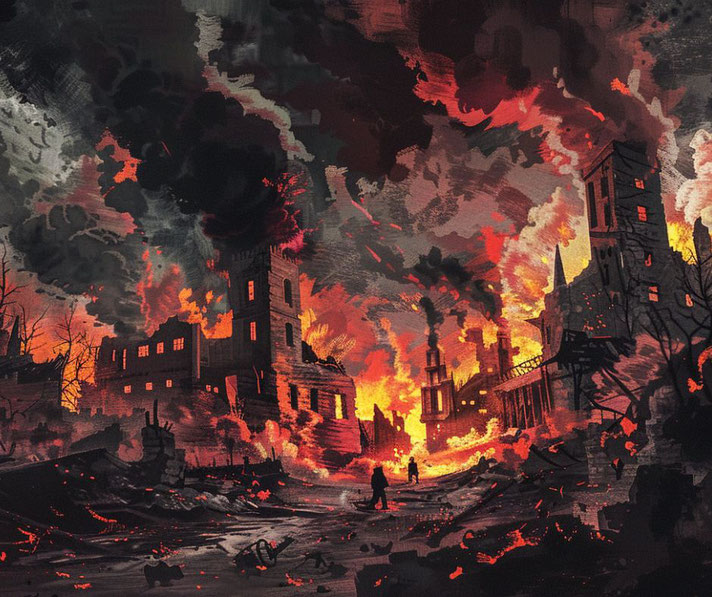What was the Spanish Civil War?

The Spanish Civil War was a conflict that erupted as a violent clash of political ideologies. Occurring from 1936 to 1939, this brutal fight pitted brother against brother in a struggle for the nation's ultimate future in Europe.
However, the war was caused by a long period of political instability, economic hardship, and social unrest as Spain tried to recover from the collapse of their once great empire.
The end of the Spanish Empire
In the 16th and 17th centuries, Spain had been a global superpower. Its conquistadors had conquered much of South America and enormous wealth was generated by the gold fleets which transported the precious metals they had taken from the local inhabitants back to Europe.
However, in early 19th century, Spain's empire fell apart. Less conquests meant less money, and the territories Spain had conquered wanted their independence back.
Spain after the empire
Throughout the 19th century, Spain gradually lost each of its colonies in a series of wars of independence.
By the dawn of the 20th century, Spain was a country struggling to reestablish itself on the international stage.
At home, Spanish politics became a tense battleground between politicians who supported liberal ideologies versus those who wanted to remain conservative and keep to the 'old ways'.
Even though there was still a king in charge in Spain, a constitutional monarchy had been created in 1874 where a parliament made the real decisions.
However, the tensions between the two political groups only increased in the early years of the 20th century, which created the conditions for an all-out civil war, as each side resolved to use the military to get what they wanted.
The coming war would be driven by deep societal divides in Spain. Primarily, the significant economic disparities between poor rural and wealthy urban areas, as well as tensions between the church, the monarchy, and emerging secular, republican ideologies.
Into this conflict stepped a man who would dominate Spain for decades. His name was Francisco Franco.

Franco's early life
Francisco Franco was born on the 4th of December 1892. As a young man, Franco desperately wanted to become a sailor.
Unfortunately, the Spanish Naval Academy did not have an opening for him. As a result, Franco joined the army and entered the Infantry Academy in 1907.
He completed his studies in 1910 and volunteered to join a war in Spanish Morocco in 1912.
During this conflict, Franco earned a reputation as a skilled and dedicated commander who showed a genuine concern for the wellbeing of his men.
His efforts were awarded in 1915 when he became the youngest captain in the Spanish army.
After further military conflicts and promotions in the Spanish Foreign Legion, he reached the position brigadier general in 1926 and was a household name throughout Spain.
Political crises in Spain
Then, in the late 1920s, Spain experienced a massive political upheaval. Politicians who supported liberal ideologies seized power and founded the Second Spanish Republic in 1931.
This was the result of the municipal elections that led to the abdication of King Alfonso XIII.
Franco was a strong supporter of the Spanish king and many leaders in the new government fully expected Franco to rise up and lead the army against them.
But, Franco declared that he was a loyal commander of the Spanish army and served under the republican government.
Then, when a conservative government came to power in 1934, he was promoted to be a Major General and then Chief of the Central General Staff of the Spanish Army in 1935.
What caused the Spanish Civil War?
By the mid-1930s, the political conflict between conservative and liberal factions threatened to destroy the Spanish government all together.
In February 1936, the Popular Front, a coalition of leftist parties including communists, socialists, and anarchists, won a narrow victory in the Spanish elections.
When this liberal alliance came to power again, Franco finally spoke up and called for the government to enforce a state of emergency, because he feared that a communist group was about to seize power.
By finally speaking out against the government, Franco was sacked from his position and, as an extra punishment, sent to the Canary Islands to neutralise him as a threat.
At this point, Franco joined a planned conservative rebellion against the Spanish government.
On the 18th of July 1936, Franco telegraphed his announcement of his military rebellion and troops on the Spanish mainland rose up to support him.
Franco flew to Morocco, where he took control of the army stationed there, and then led it to Spain. Franco then marched his troops towards Madrid.
There, Franco was elected by nationalist politicians to become the leader of Spain and fight against the supporters of the liberal, republican government.
The Spanish Civil War had now started.
Understanding the two sides of the war
The Spanish Civil War was, at its simplest, a conflict between two Spanish armies.
The Spanish government forces were known as the Republicans. They also included two important groups: the anarchists and socialists, with groups like the CNT (Confederación Nacional del Trabajo) and the UGT (Unión General de Trabajadores) being pivotal in organizing militias and collectivizing industries for the conflict.
In addition, over 40,000 volunteers from around the world joined the International Brigades to support the Republican side, including notable figures like Ernest Hemingway and George Orwell, who later wrote about their experiences in the conflict.
On the other side was Franco’s Nationalist army. They signed an agreement with Hitler's Germany and Mussolini's Italy, who sent their own soldiers, aircraft, equipment, and funding to support Franco.
As a result of this support, Franco's forces are also known as Fascists. With these new resources, Franco organised a carefully planned and executed war against the Spanish liberals.
Other European powers and the United States signed a Non-Intervention Agreement in 1936.
This aimed to prevent the war from spreading but was largely ineffective, with both sides receiving foreign aid covertly.
What happened in the Spanish Civil War?
The war that was about to begin was particularly brutal. Each battle seemed to result in high casualties, but they were made worse by the vicious reprisal killings of soldiers and civilians that opposed them.
On November 8, 1936, the drawn-out Battle of Madrid began. The Republican defenders fought fiercely to hold the capital against the advancing Nationalist army led by Franco.
The city endured relentless bombings and the prolonged siege lasted until March 1939.
Then, at the Battle of Guadalajara, which was fought between March 8-23, 1937, the Republicans experienced a rare and morale-boosting victory.
Italian troops, which were fighting for the Nationalists, attempted to advance toward Madrid but were repelled by determined Republican forces, including several International Brigades.
The victory at Guadalajara was crucial as it halted the Nationalist advance towards the capital for a short period of time.
Then, on April 26, 1937, the town of Guernica was heavily bombed by the German Luftwaffe.
Huge numbers of casualties were recorded from these attacks and many of them were Spanish civilians, not soldiers.
This was viewed with great horror by many Spaniards, and it turned public opinion both domestically and internationally against Franco.
It was also an act that inspired Picasso's famous painting of the event and highlighted the brutal impact of the war on civilians.

The Battle of the Ebro, the longest and one of the bloodiest battles of the war, started on July 25, 1938.
Here, the Republican forces launched a major offensive across the Ebro River in an attempt to divert Nationalist forces from other fronts.
This strategic move initially gained ground but eventually succumbed to the superior air power and resources of the Nationalists.
By the battle's end on November 16, 1938, both sides had suffered heavy casualties, and the Republican army was left significantly weakened, which paved the way for Franco's final offensive.
How the war came to an end
Franco's victory in 1939 led to a repressive dictatorship that lasted until his death in 1975, during which time political dissent was brutally suppressed, and tens of thousands of Franco's opponents were imprisoned or executed.
Franco remained in power during the Second World War and became a military dictator of Spain.
Three years after Franco's death, Spain became a democracy under a constitutional monarchy once more.
What do you need help with?
Download ready-to-use digital learning resources
Copyright © History Skills 2014-2025.
Contact via email
With the exception of links to external sites, some historical sources and extracts from specific publications, all content on this website is copyrighted by History Skills. This content may not be copied, republished or redistributed without written permission from the website creator. Please use the Contact page to obtain relevant permission.





